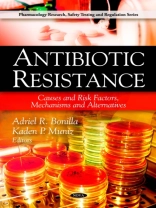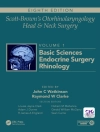Antibiotic resistance is the ability of a microorganism to withstand the effects of antibiotics. There are three mechanisms that can cause antibiotic resistance: prevention of interaction of drug with target, decreased uptake due to either an increased efflux or a decreased influx of the antimicrobial agent and enzymatic modification or destruction of the compound. In the past couple years, antibiotic resistance has become an increasing public health concern. Tuberculosis, gonorrhea, malaria and childhood ear infections are just a few of the diseases that have become hard to treat with antibiotic drugs. This book addresses the concern that over the past few years, there has been a major rise in resistance to antibiotics among gram-negative bacteria. New antibacterial drugs with novel modes of actions are urgently required in order to fight against infection. Novel antibiotics such as linezolid, carbapenem ertapenem, daptomycin and gemifloxacin are examined in this book. The genetic approaches used in risk assessment of antibiotic resistance dissemination are looked at as well. Furthermore, this book discusses the present studies on the use of veterinary antibiotics in agriculture, on the occurrence of antibiotic compounds and resistant bacteria in soil and water and clearly demonstrates the need for further studies
Adriel R Bonilla & Kaden P. Muniz
Antibiotic Resistance [PDF ebook]
Causes and Risk Factors, Mechanisms and Alternatives
Antibiotic Resistance [PDF ebook]
Causes and Risk Factors, Mechanisms and Alternatives
Buy this ebook and get 1 more FREE!
Format PDF ● Pages 545 ● ISBN 9781616681623 ● Editor Adriel R Bonilla & Kaden P. Muniz ● Publisher Nova Science Publishers ● Published 2018 ● Downloadable 3 times ● Currency EUR ● ID 7219357 ● Copy protection Adobe DRM
Requires a DRM capable ebook reader












